Queensland artist William Bustard (1894–1973) is well known as an artist, illustrator and stained-glass window designer whose artworks are held in Australian public collections, including QAGOMA (Brisbane townscape 1928 illustrated is on display in the Australian Art Collection, Queensland Art Gallery).
Born in England in 1894, Bustard and his wife Lily migrated to Queensland in 1921, where he was influential in Brisbane’s art community including as a Trustee of the Queensland National Art Gallery as a lifetime member (now Queensland Art Gallery | Gallery of Modern Art), and in 1932, president of the Royal Queensland Art Society1 and as an art teacher.
William Bustard
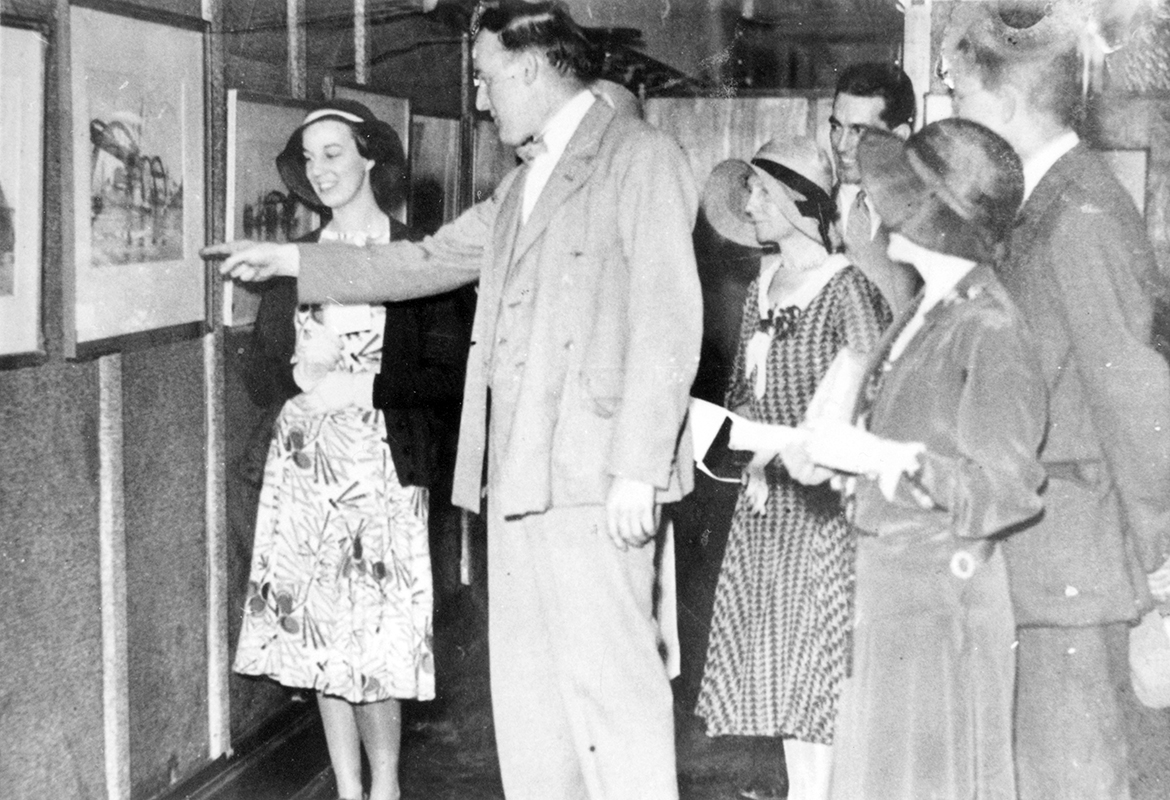
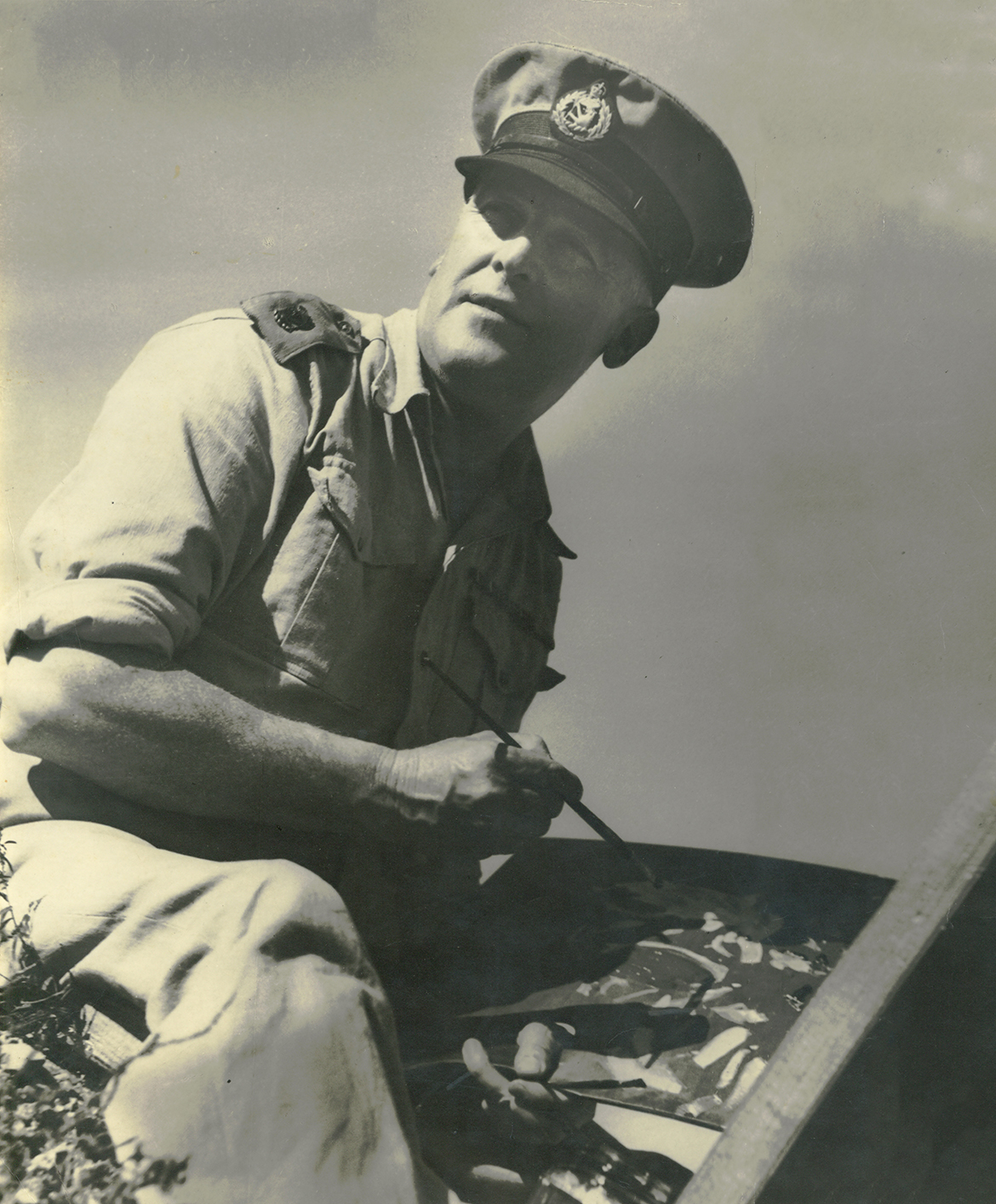
What is less well known was Bustard’s involvement with the Royal Australian Art Force (RAAF) during World War Two as a camouflage artist, one of many Australian artists and designers who contributed to the war effort through their working knowledge of abstraction and illusion. These corresponded well with the two camouflage principles of concealment and deception2 to fool the enemy.
Although from the time of World War One, artists and designers in Europe, the United States and Australia were engaged in camouflage, as Dr Ann Elias notes, they had a larger role in World War Two with modern technologies, such as in aerial surveillance and photographic technology, demanding a more innovative approach to camouflage.3 Camouflage became less about painting and more about structures to conceal with nets, often made by women in organisations such as the National Defence League’s Women’s Auxiliary, an essential device in this regard.
Making camouflage nets

In England, during World War One, Bustard had enlisted in the Royal Army Medical Corps and served in Greece and Italy. When Australia entered World War Two, Bustard joined the Citizen Military Forces and between 1942 and 1943 he was posted to Gayndah and Townsville where he worked as a camouflage officer at the RAAF bases.4 Gayndah located 110 km west of Maryborough in the North Burnett Region, was one of six locations in Queensland from a total of 31 in Australia5 for a series of Inland Aircraft Fuel Depots (IAFD) which were built for the RAAF for bulk storage of fuel in tanks during 1942 and 1943. The sites consisting of tanks constructed of brick and steel were located inland close to railway lines for access by rail tankers, but away from the airfield they serviced.
Gayndah Railway Station
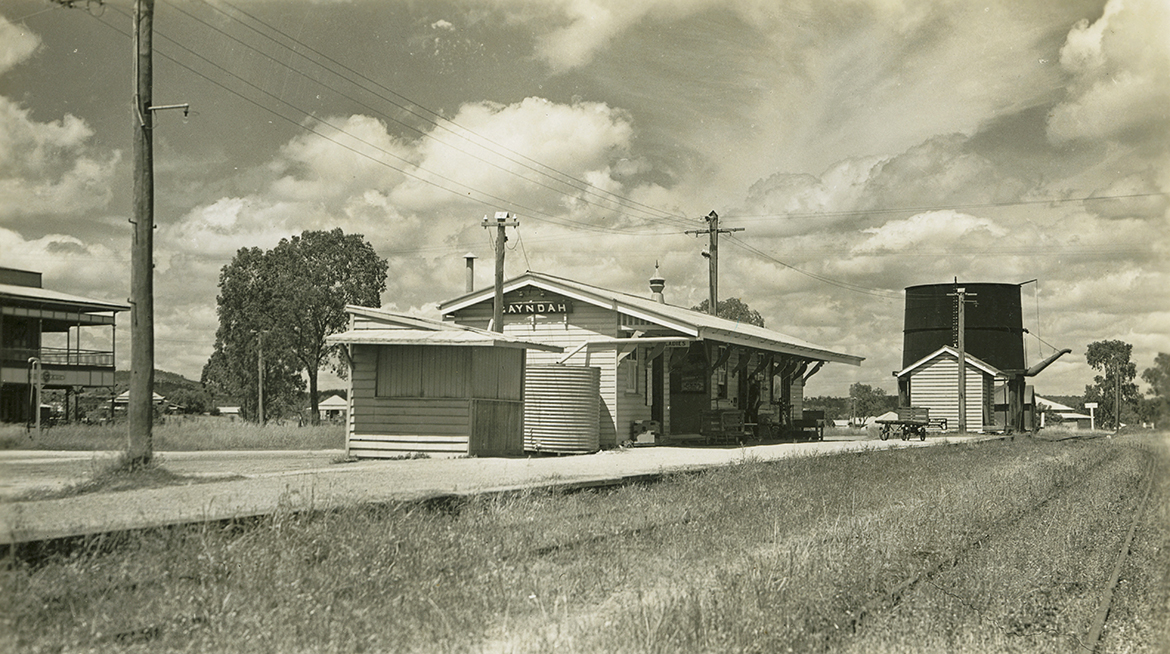
The Australian War Memorial holds a watercolour by Bustard Camouflaged aviation spirit storage depot, Gayndah, Queensland 1953 (illustrated) which shows his camouflage design for the storage depot at Gayndah, turning three large storage tanks and other buildings into a dummy farm. The transformation of the Gayndah aviation spirit storage depot through Bustard’s camouflage designs in 1943 is also shown in a series of photographs held in the William Bustard Archive, QAGOMA Research Library. The success of the design meant that from the air, no evidence of the tanks was seen regardless of the time of day.6
Inland Aircraft Fuel Depot, Gayndah

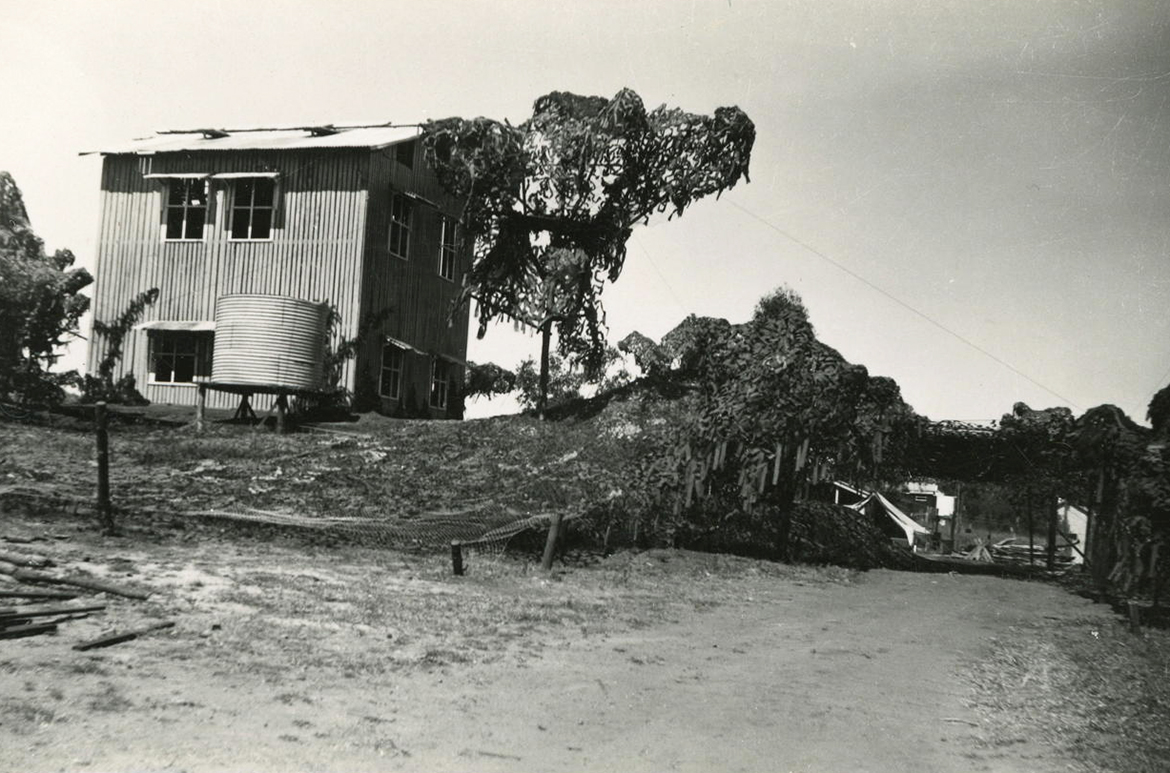
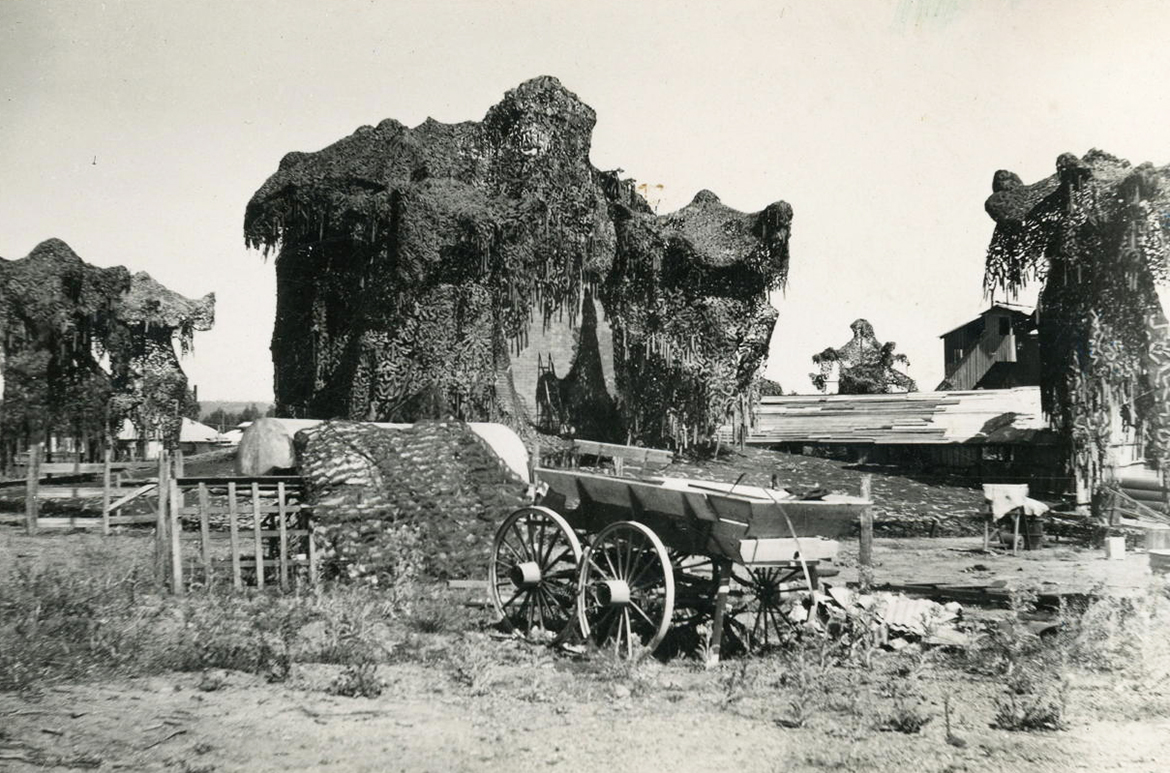
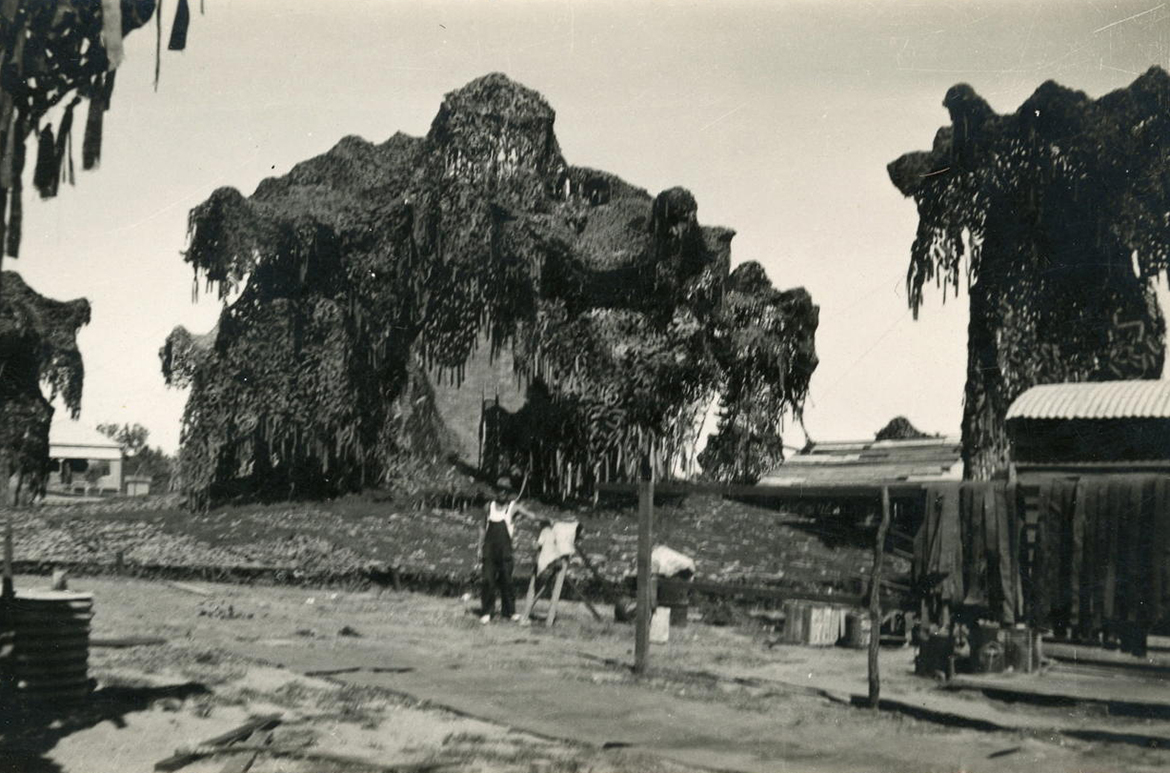

After the War, Bustard returned to painting, holding his second solo exhibition in 1945, teaching at the Central Technical College in Brisbane, and to work with stained-glass, evidence of which continues to adorn public buildings today.
Endnotes
1 Raoul Mellish, ‘William Bustard’, Australian Dictionary of Biography, https://adb.anu.edu.au/biography/bustard-william-5443
2 Ann Elias, ‘The organisation of camouflage in Australia in the Second World War’, Journal of the Australian War Memorial, issue 38, https://www.awm.gov.au/articles/journal/j38/camouflage
3 Elias, https://www.awm.gov.au/articles/journal/j38/camouflage
4 Madeline Hogan, William Bustard: Painting with Light [exhibition catalogue], Museum of Brisbane, 2015, p.19.
5 Toowoomba No.7; Gayndah No.8; Charters Towers No.9; Yarraman No.21; Roma No.22; and Cloncurry No.23
6 William Bustard, Camouflaged aviation spirit storage depot, Gayndah, Queensland 1953, Watercolour on paper, 75 x 67.8cm (framed), Collection: Australian War Memorial, https://www.awm.gov.au/collection/C168811
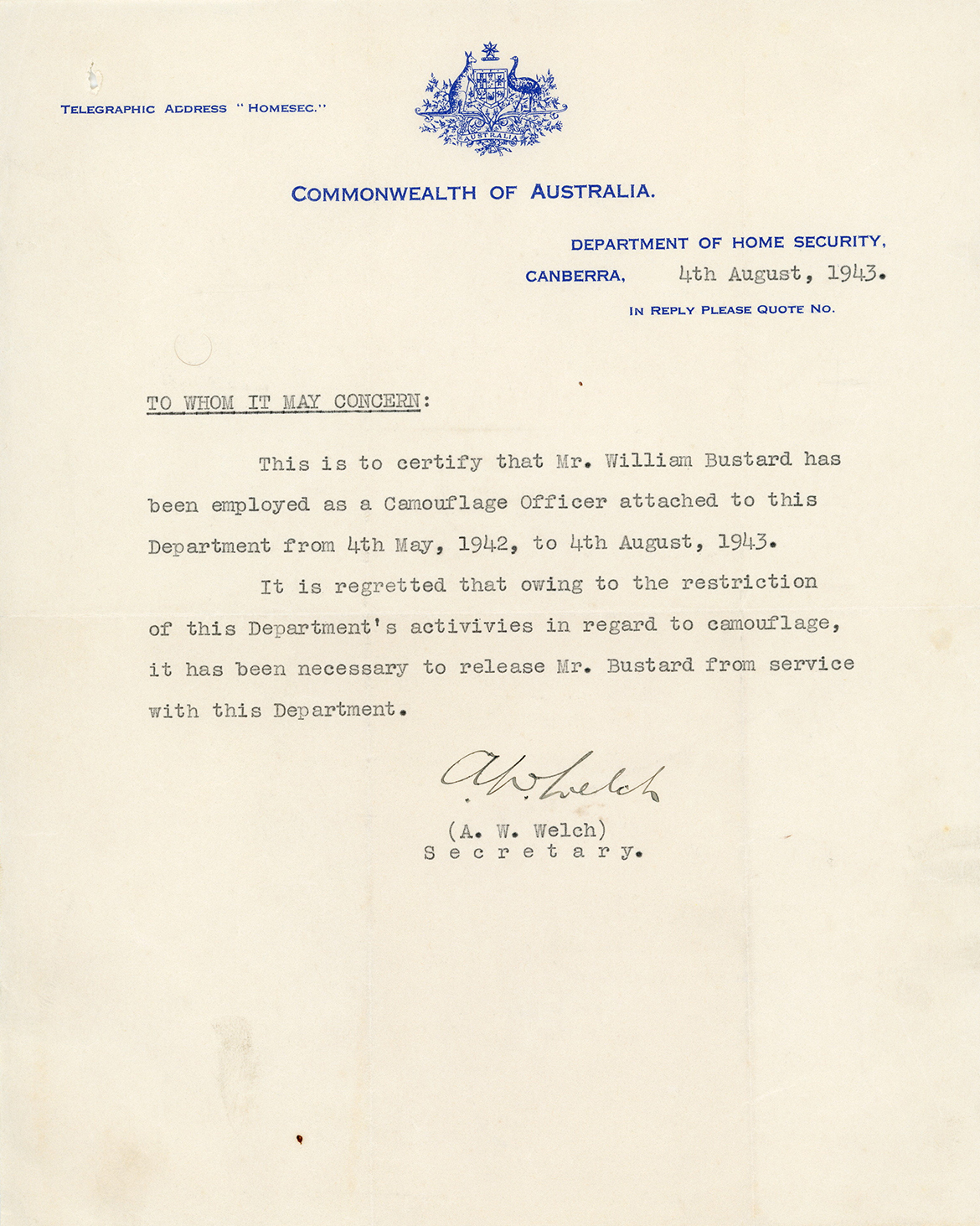
William Bustard Archive
William Bustard is represented in the QAGOMA Collection, and the Research Library holds the William Bustard Archive of original material, including his exhibitions book 1931–50, press clippings, photographs of his stained-glass windows and letters. A selection of material from the archive is currently on display in the Library.
QAGOMA Research Library
The QAGOMA Research Library is located on Level 3 of the Gallery of Modern Art (GOMA). Open to the public Tuesday to Friday 10.00am to 5.00pm. visit us in person or explore the online catalogue. Access to special collections is available by appointment.
William Bustard ‘Brisbane townscape’
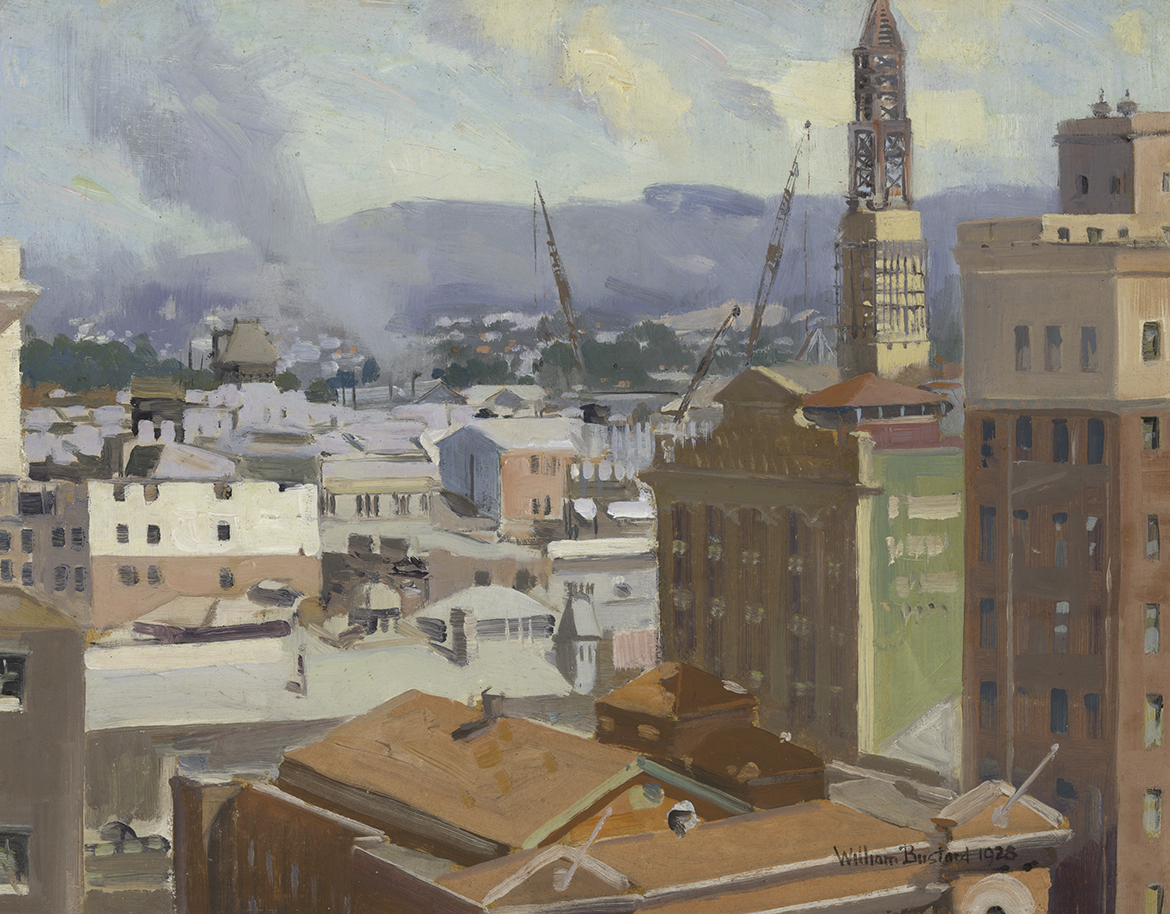
#QAGOMA

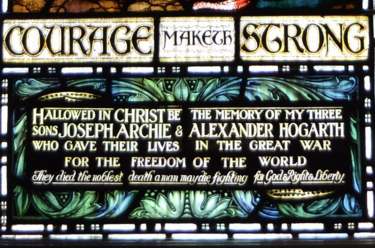
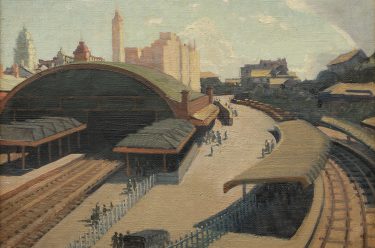
I found this article scouring for anything that I may find interesting and this is what I found. I moved to Gayndah in 1978 and I am a member of the Gayndah and District Historical Society and I also worked on the land where these fuel storages were but, I am sorry to say are no more. Shame on Gayndah Council for not keeping them. At that time I was working for Sungold Petroleum and now the area is covered with houses. Nothing at all to say that they were there. I was so glad to come across this article about William Bustard and his ability to camouflage.Regards Mary.
Thanks Mary, we appreciate your feedback… glad you found us :) Regards QAGOMA